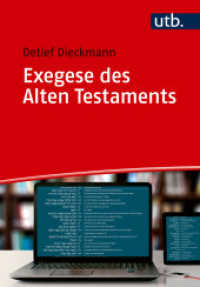- ホーム
- > 洋書
- > ドイツ書
- > Social Sciences, Jurisprudence & Economy
- > Environment, Agriculture, Forestry
- > Agriculture & Gardening
Full Description
They are distributed in the three main forestry ecoregions of the country: the subtropical dry forest (Chaco), the subtropical rain forests (Yungas and Alto Paraná rainforests) and the temperate forests of Patagonia.








